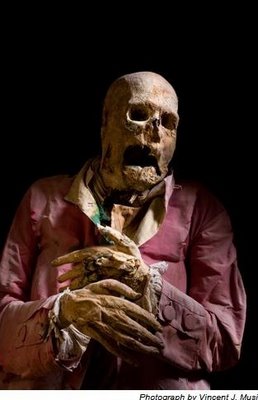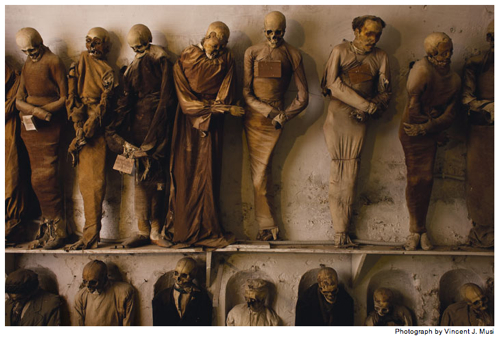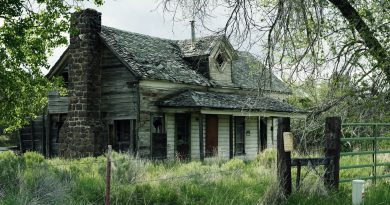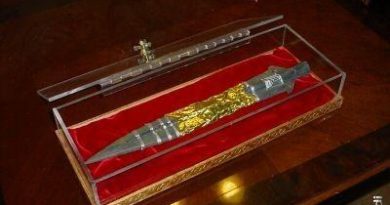Sicily Crypts: Place Where The Dead Don’t Sleep
A Haunting Experience in Palermo Catacomb
It has been said that Sicilians have an obsession with death. It is still very common to see elderly Sicilian widows wearing black for the remainder of their lives and a tradition of professional mourners once existed for centuries. It is hard to say where this cult of the dead comes from, either from the deep rooted Catholic faith or perhaps a holdover from ancient Greek and Roman times. Regardless of the origins, notions about death are still alive in Sicily, and no place better exemplifies this than Palermo’s Capuchin Crypt. This macabre display is one of a mummy.
The Capuchin Order is an offshoot of the more famous Franciscans that branched out in the mid sixteenth century. Their names comes from the distinctive hood that the monks wear that has since lent its name to the popular coffee drink Cappuccino, whose foamed milk top it resembles. Even though this Order of the Friars Minor originated in the Marche region of Italy, their unique take on the mortal body after death make them a perfect fit for Sicily. In fact the first monk to be embalmed was placed in the crypt shortly after the Order arrived in Palermo.
Entrance to the Crypt is located at Piazza Cappuccini, which is a short walk from the Palazzo Reale. It is an unassuming building that conforms to the Order’s vow of poverty and may be overlooked if you miss the signs. On arriving you may be greeted by the elderly monk who watches over the crypt as he gestures toward the cool and dark stairway that leads to the crypt. As you walk down the steps one is reminded of Dante’s inscription above the gates of hell: “Abandon all hope, ye who enter here.”
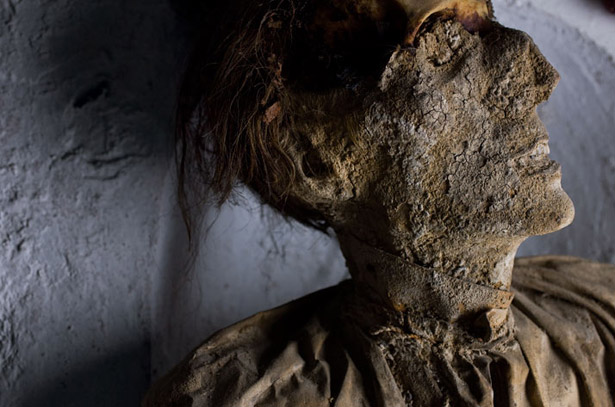
A creepy, eerie feeling surrounds you as you walk along the halls. Suddenly the ghostly voice of a monk echoes through the chamber stating “no photo.” It makes you wonder why anyone would want to take pictures in the first place. If ghosts could be caught on film, it would certainly be here.
Even though it seems like a hodgepodge of bodies, some hanging and some in open coffins, the crypt is organized by social status and gender. The first section contains the monks of the order, the original residents of crypt. This section includes the body of Brother Silvestro da Gubbio, the oldest member of the crypt whose grotesque remains have been welcoming visitors since 1599.
The men’s section is next, all dressed in clothing of their time period and looking ready to rise and join the living. The Women’s section is very interesting as there is a special area for “virgins” denoted by bodies that wear a metal band on their skulls. These maids still wearing their silk dresses and bonnets are very spooky. The professor’s section is actually the area designated for doctors, soldiers another men of professions and include some famous individuals such as the painter Velasquez and sculptor Lorenzo Marabitti. The soldiers dressed in their parade uniforms are still colorful after nearly two centuries. The Priest section is small but contains numerous holy men still wearing their tattered cassocks and ghostly white vestments.
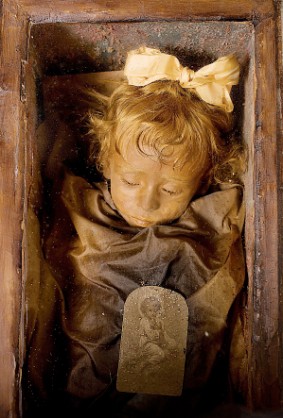
This process was halted in 1871 with Brother Riccardo being the last buried under these conditions. However in the small chapel at the end of the tour houses the very last member of the crypt, a child that has come to be known as “sleeping beauty”. Rosalia Lombardo died in 1920 and thanks to a secret chemical embalming process she looks as if she is only sleeping. Encased in a glass-covered coffin, it is hard to believe that this little girl died 85 years ago. She looks like she could open her eyes at any moment, a truly haunting vision that stays with you for days.
